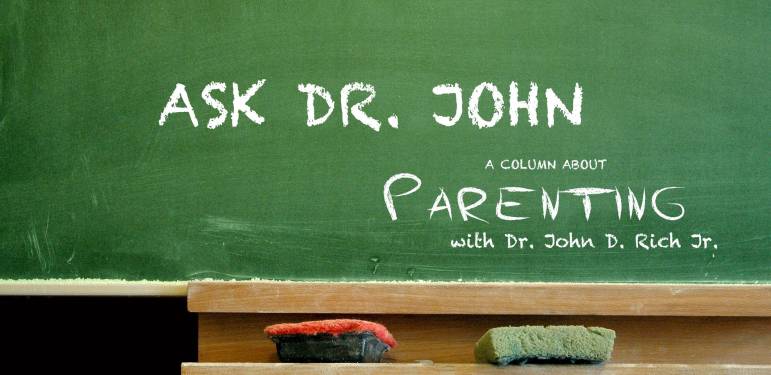
 Not too long ago, I was scrolling through Facebook, and I came upon a video that made me smile. It exemplified positive parenting in a way that just had to be shared. Our world will be better if we have more courageous daughters and sensitive sons. I am hoping this article will make the case that gender-free parenting is a noble and wonderful goal.
Not too long ago, I was scrolling through Facebook, and I came upon a video that made me smile. It exemplified positive parenting in a way that just had to be shared. Our world will be better if we have more courageous daughters and sensitive sons. I am hoping this article will make the case that gender-free parenting is a noble and wonderful goal.
When my wife was pregnant with our first child, I remember discussing a belief that we both had; namely, we wanted to raise our children the same, regardless of gender. We noticed that the gender roles that our society proscribes restrict the freedom that people have to be authentic. Sons are taught to “be tough,” and “be a man.” Meanwhile, daughters are taught to focus their energies on being nice, making others happy, learning how to listen and communicate with others.
These narrow behavioral scripts can leave children with incomplete skills for success. We wanted our children to be both brave and socially competent. The purpose of this article is to discuss research which examines the effect of raising children inside strict gender roles, and then encourages you to create courageous daughters and sensitive sons.
I contacted the father in the video, and asked him if I could have permission to show some videos and pictures of him interacting with his daughter. Here’s a video that expertly demonstrates some of the principles I want to teach on this site:
This video contains a wealth of good advice for parents who want to create courageous daughters. First of all, I especially appreciate the amount of praise the father (Michael) lavishes on the daughter (Olivia). He is constantly saying, “Good job!” and “Nice!” Notice, however, that he also provides soft teaching and redirection when she needs to change what she’s doing. He says, “Push push push!” and provides immediate feedback to her when she isn’t looking ahead and the bike wobbles. He says, “See what happens, when you don’t turn around?” Then, first chance he gets, he praises her for what she is doing. His instructional comments are considered “soft,” because they are delivered in a tone that conveys support and delight in the process.
Olivia is getting constant feedback on her progress, and is motivated to receive praise from her father. At one point, she needs to turn to avoid hitting a wall. Michael says, “Keep turning keep turning keep turning.” What makes this video so special is how his instruction is always followed by a higher pitched exclamation of pride when she is successful. When she makes the turn without falling, he sounds like he can barely contain himself: “Goood tuuuurn!” This video was taken early on in Olivia’s development as a bike rider. She needs feedback from someone she knows is her champion, so that she can trust what she’s doing and courageously continue.
Shaping your child toward success
As I’ve said in my article on using rewards, the most powerful tool in your parenting toolbox for raising great children is called “shaping.” When a child is learning a new skill, like riding a bike, it is unrealistic to expect him to just jump on the bike and start riding and doing wheelies. If your expectations for a new skill are too high, you are just setting the situation up for failure. In essence, a task that is currently impossible for a child will end in disappointment and bad feelings, which psychologists would call a punishment (because the outcome of the experience was negative).

According to the Law of Effect, by Edward Thorndike, punishments make it less likely that the behavior will be repeated. In my article on using punishments, you can see a fuller description of these mechanics. For the purposes of this article, if you expect more from a child than she can possibly perform at this moment, you are making it less likely that she will want to do it again.
Notice that I am not saying that the task is impossible; only that the task is currently impossible. The job – and joy – of the parent in teaching new skills is to make what is currently impossible and make it gradually easy!
How it’s done
How does one do that, you ask? Through the use of “successive approximations.” In other words, you break up the ultimate goal (riding a bike) into smaller subgoals, each of which moves you closer to the final behavior you want to produce. Along the way, as the child takes on the challenge of each subgoal, and eventually masters it, you provide high praise and rewards. Then, you up the ante, and challenge the child to add on another level, rewarding, redirecting, modeling and praising along the way.
I asked Michael about how he may have done this in teaching Olivia to ride a bike. I also asked if he could reflect on how he handled Olivia’s inevitable mishaps and falls. He thought about it, and asked some friends for their memories of the process. One friend mentioned that Michael used something called a strider bike. Above are two pictures, from Amazon.com, of strider bikes:
As Michael’s friend describes it, “When Sparkle (her nickname for Olivia) was old enough, she learned to ride a “Strider” which is a short bicycle with no pedals and no training wheels, also known as a balance bike. Kids sit on the seat of the Strider and walk, and then, as they develop their balance, they start walking faster, and eventually coast between strides. Very natural way to learn.”

I have also written about the use of strider bikes, and how they help a child to learn about the balance portion of riding a bike separately from the other parts they will need to learn. When thinking about how to teach my child to ride a bike, I was struck by just how many things a person has to master at the same time in order to be successful. You have to balance, pedal, steer, look at your surroundings, and have in the back of your mind how to brake. So, when I taught my son to ride a bike, I took the pedals off at first and had him learn how to just push himself along, keeping his feet in the air for longer and longer periods of time until he felt comfortable keeping himself from falling.
Everything you have ever learned is likely the result of shaping – learning to read starts with learning what letters are and how they sound; learning to cook starts with learning about which tastes go well together, etc.
The strider bike, or the bike without pedals, is shaping in action. Michael is giving Olivia the chance to master a skill that is far more doable in a shorter period of time than just putting her on the bike and letting her fall. Those mastery experiences she will have along the way will build her confident and motivate her to keep trying. Remember: positive experiences lead to more trying; negative experiences lead to less trying.
Letting her fall
Even with the strider bike, your child will fall. Our first lesson is to break up goals into small accomplishments, so that the experience your child has is positive. The second lesson to be learned is how to handle the falls when they come. And the big lesson to be learned is that showing your child how to handle the little falls, will make them better at handling the big falls when they are adults. I’d really like to bold that, and underline it, and add asterisks and floating balloons around it.

Each challenge you give your child is really a life lesson. Will you shield you child from harm, or en-courage (did you ever notice the word “courage” in the word “encourage?”) her to get back up and face the challenge again? Will you allow your child to be upset when he falls, or will you reprimand or scold him for being weak? As I am about to discuss, parents tend to teach sons to face challenges, and daughters to focus on their feelings, and NOT vice versa. The combination of allowing your child the right to his feelings, and encouraging her to face her fears is the essence of parenting without gender.
Back to Olivia: I asked Michael how he handled it when Olivia fell down? This is how his friend described a time when she did:
“Olivia was in high spirits and doing really well with the strider on the dirt paths. She was going out ahead, happy and giggling. Hanging close to Dad only when some big off-leash dogs came tromping up the path.
At one point, I could see in the distance that there was a large section of trail with leftover snow that had been trampled by many walkers the previous few days and since refrozen . My instinct was to stop Olivia and tell her to be careful or that I could carry the bike over the ice. But her father didn’t do that.
He was fully aware of the ice, but he still let her proceed. Olivia kept on going in high spirits and crossed over 15 yards of the ice without falling before she slipped. Dad was right there when she fell. As she started crying, Dad was right there and dried her hands which was what she was most upset about and he helped her see she was OK. She got up, recovered her spirits, and kept riding a little more mindful but without fear.
I had never seen this dynamic, and realized my instinctive over-protection could block a kid from learning how to look ahead, how to fall, how to assess the damage and get back on the bike a little smarter and without fear. And keep having fun! Holy Wow!”
The biggest lessons are learned from the smallest experiences. The video I showed you at the beginning of the article was near the beginning of Olivia’s development as a bike rider. Let me show you another video of Olivia, a little later, all “shaped up” (get it?)
LOL! She’s riding a motorbike! I haven’t even ever ridden a motorbike, and 165 years old! I hope that made you laugh like it did for me. Olivia is learning, through the consistent use of small goals, paired with praise, instruction, modeling and redirection, how to be a bold, courageous woman.
Michael’s friend had another comment about Olivia falling that I think is really well said: “I just think it’s really important that people recognize there isn’t one right way and that letting someone fall when the stakes are lower and they are close to the ground has a wealth of critical life skill learning opportunities. Little girls need to fall and fail and learn how to keep having fun in the presence of that thing called gravity.”
The importance of gender-free parenting
When I saw the video on Facebook that made me reach out to Olivia’s parents, I was delighted to see shaping used so explicitly. However, there was another reason I was so excited by that video. Olivia was being exposed to activities that require bravery. In an article by Carmen McLean and Emily Anderson partially called Brave Men and Timid Women, the authors discuss how many parents tend to handle fear and anxiety differently in sons vs. daughters.
More specifically, a parent of a son may tell the son to face his fears, stop being a crybaby, be a man, try it again. In general, boys are more likely to be encouraged to buck up and confront situations in a masculine way. On the contrary, girls are more likely to be listened to, parents will honor the girl’s feelings, perhaps step in and fix the situation for her, protect her, keep her safe, let her off the hook, use more control without granting autonomy.
As a consequence, this longitudinal study finds a relationship between those approaches to fear-inducing scenarios with daughters and higher rates of anxiety when they are older. In addition, women’s gender-specific upbringing can be related to more feelings of helplessness when faced with a situation where failure is possible. Meanwhile, boys are brought up to view challenges and difficult situations as problems that ought to be confronted and solved.
As the authors state, “Expression of anxiety is inconsistent with the male gender role, and fear is less tolerated in boys…Boys may learn that the masculine role involves bravery and purposeful coping behavior when faced with anxiety-provoking situations.” The authors go on to say that when boys are faced with a situation that makes them afraid, they are more likely to be told to gain control of their emotions and solve their own problems. On the contrary, girls are reinforced for focusing on “the experience of the emotion itself.” Parents will talk to their daughters about their feelings, empathize with their fear, and are more likely to encourage them to avoid similar situations in the future.
While teaching boys skills for confronting anxiety may be positive, there is a drawback. There is plenty of psychological evidence to suggest that boys who are discouraged from expressing emotions like fear or anxiety may be less capable of coping with those emotions in others, and less able to communicate their desires with their partners and close friends.
How your child “turns out” has a lot to do with what skills they have practiced. If your son hasn’t had a lot of experience talking through, and being comfortable with, emotional difficulty when he is young, he will enter adulthood needing to develop those skills on his own. Why not teach him now? Help your son be a courageous and sensitive son. If your daughter hasn’t had a lot of experience confronting risky situations, because you bail her out when she is afraid, she will enter adulthood needing to develop those skills on her own. Why not teach her now? Help your daughter be a sensitive and courageous daughter.
In short, parenting which complies too strongly with gender norms (i.e. man = strong and rational; woman = sensitive and emotional) can lead to “incomplete children” who are missing key skills that will help them succeed in the adult world. We must teach our daughters to be courageous and face their anxieties, and we must teach our sons to be sensitive and emotionally expressive. Think about the adults in your life who are most likeable and fun to be around. Wouldn’t you agree that they are a combination of ambition, strength, emotional intelligence and empathy?

Now, I know that psychological research is a report of trends, and there are plenty of parents who treat their daughters in the same way as their sons, but the research suggests that parents like Michael and Ann are more an exception than people realize. I encourage you to think intentionally about how you can send messages that allow your daughter to confront her fears and give her high praise when she does so. I also encourage you to think intentionally about how you can be more accepting of your son when he cries, or is worried or anxious about something. Our world needs bold, courageous people, who have a strong sense of agency that has been created through multiple mastery experiences. Our world also needs people who are in touch with their emotions, and comfortable with the emotions of others. I hope this article has inspired you to give our world more courageous daughters and sensitive sons.
Until next time, happy parenting! I look forward to your comments and questions. Finally, please – if you like this article, and the positive message I am hoping to provide – share it with others, so that more of us can raise great children.












